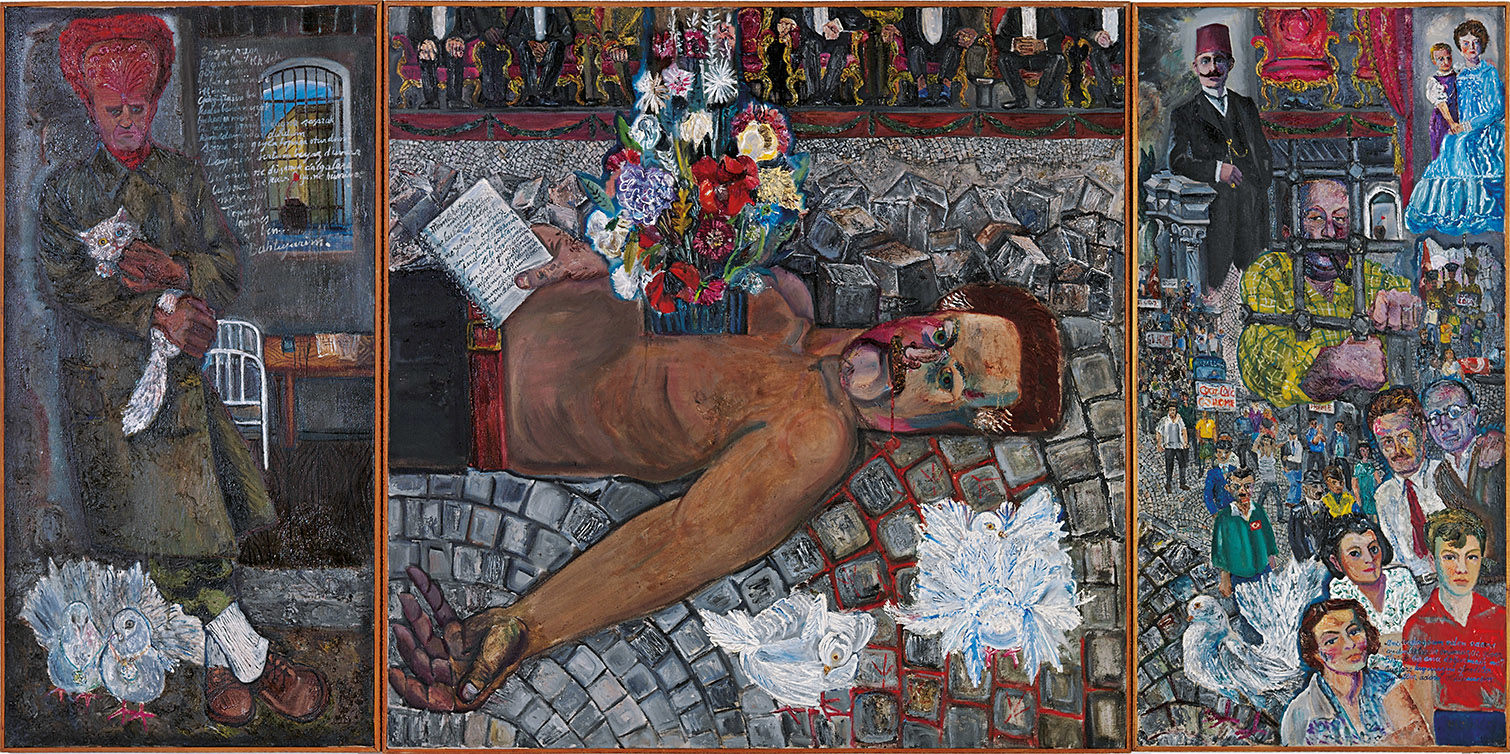- Open Today: 10.00–18.00
- Ticket
- Shop
- Membership
- TR EN

Cihat Burak, 1915-1994
Death of a Poet, 1967
After graduating from Galatasaray High School, Cihat Burak enrolled in the Academy of Fine Arts to study architecture. Although he continued to practice architecture throughout his life, he never put painting or the pursuit of art in second place. A number of scholarships and grants gave him the opportunity to study and work in Paris. In the 1970s, as debates in Turkey on universality and locality in art continued, Cihat Burak adopted an approach of social realism in his paintings and lent color to common social subjects with a visionary interpretation. Burak interpreted tradition through a contemporary language and infused many scenes of the stories he depicted with a poetic and epic-like expression.
His subject is a memorial to the “romantic revolutionary” poet Nâzım Hikmet. It combines lines from some of Hikmet’s most famous poems with images selected from photographs. We see the subject in prison, wrapped in a green coat, his head swollen with lines of poetry. Flowers and birds, normally lighthearted motifs, are here weighted down by unrequited love. The flower motifs evoke Hikmet’s many loves, while the birds symbolize the International Peace Prize he was awarded in 1950. The center panel, showing his dead body, suggests he was killed in a street riot, perhaps by a stone, although he actually died of a heart attack in 1963. The cobblestones are uprooted as though waiting for a revolution, and the pastiche of imagery from the past and the present gives the work a surrealist sensibility. At the top of the third panel Hikmet is portrayed as a young man, wearing an Ottoman fez and accompanied by his mother. At the bottom corner we see his friends and family, but perhaps the most striking figures are those that Burak perceives as carrying on the legacy of protest long after Hikmet’s death.
Painting
Oil on canvas
Istanbul Museum of Modern Art Collection
Oya - Bülent Eczacıbaşı Donation